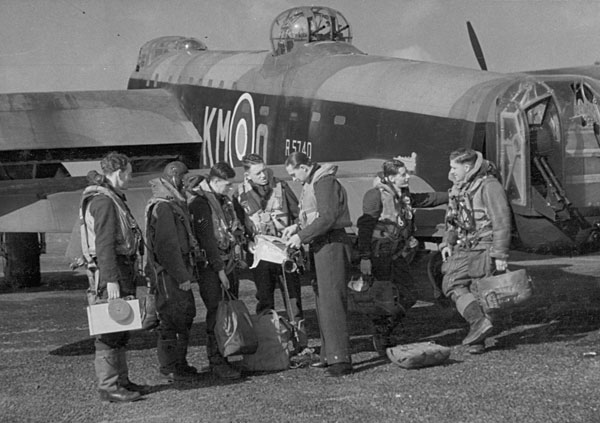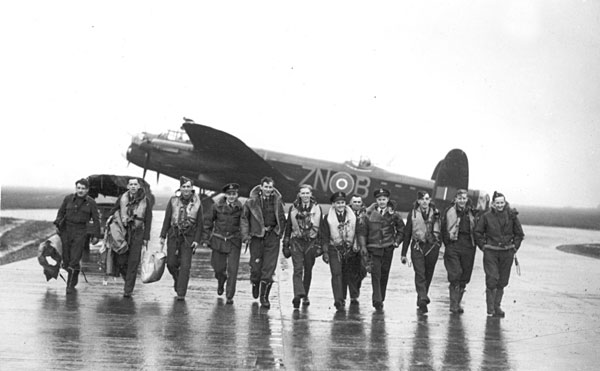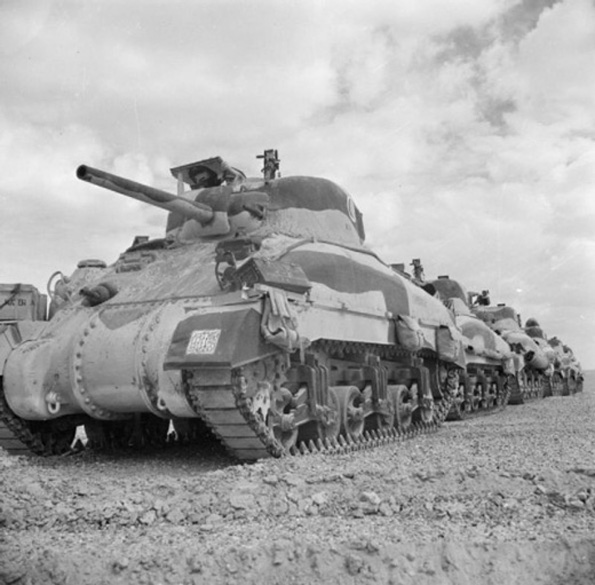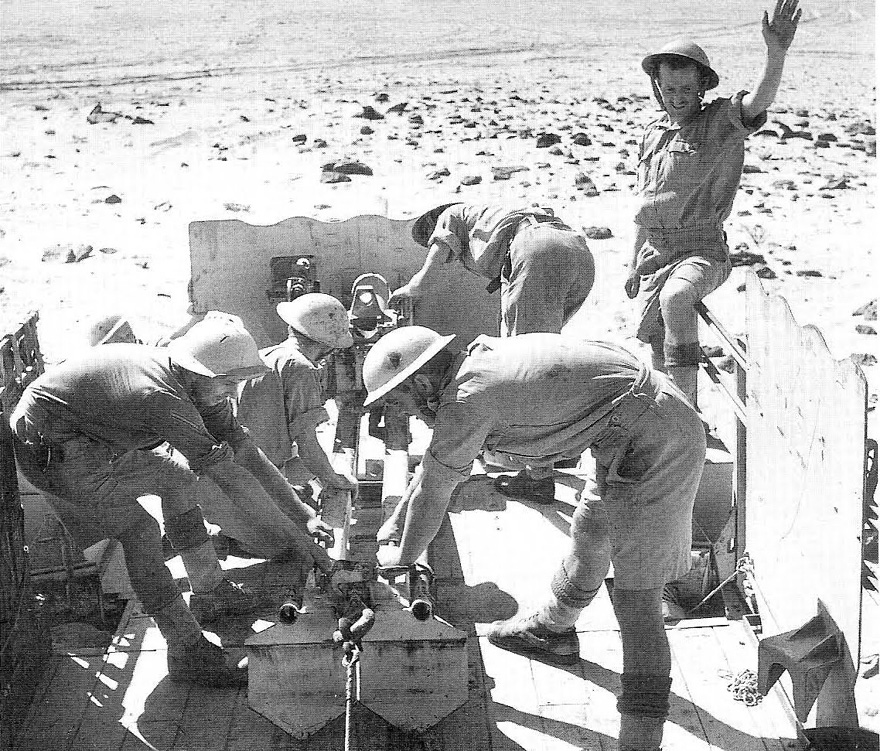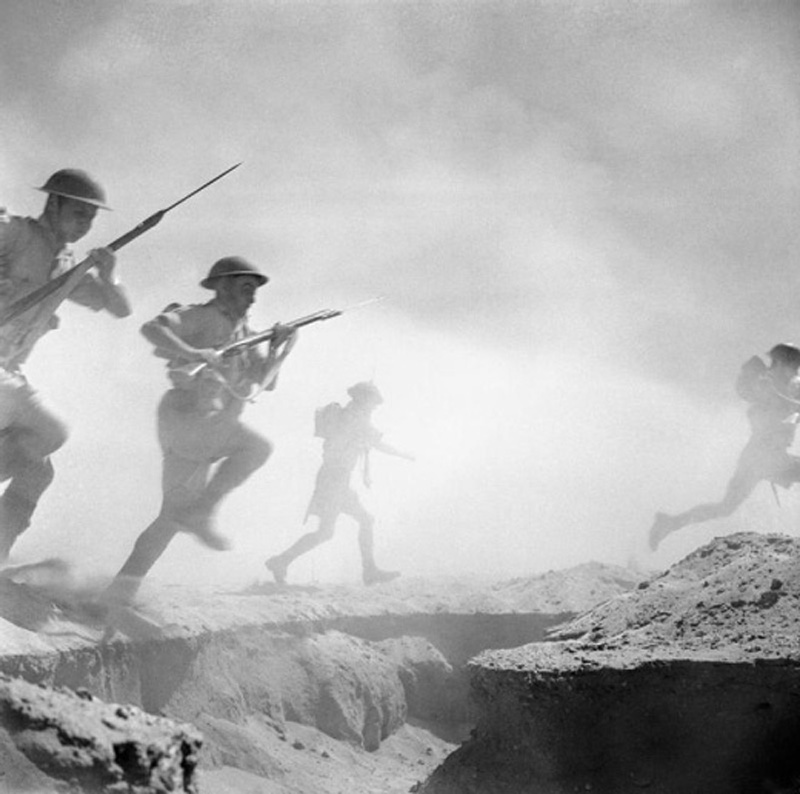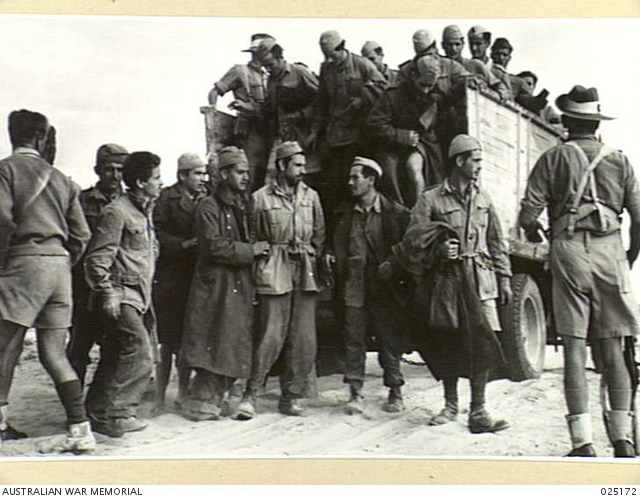Air Operations, Aleutians
3 28th Composite Bomb Group B-17s attack the Kiska submarine base.
[Air Operations, Egypt
- USAMEAF 12th Medium Bomb Group, in B25s, mounts 50 combat sorties against German Army troop concentrations, vehicle traffic, artillery emplacements, and tent camps.
- 57th Fighter Group P-40s, escorting RAF and British Commonwealth bombers attack targets of opportunity, including tanks and motor vehicles.
Air Operations, Europe
BOMBER COMMANDDaylight Ops:
- 88 Lancasters of are sent to Milan on a risky daylight operation.
- The planes proceed on a direct route across France, using partial cloud cover, to rendezvous at Lake Annecy. The Alps are crossed and Milan is bombed in broad daylight. Defense there is weak and the bombing is accurate. The raid is a complete surprise to the city. 135 tons of bombs fall in 18 minutes. 30 large fires are started. 441 houses are destroyed as well as a number of industrial and commercial sites. At least 171 people are killed.
- 3 Lancasters are lost, 1 near Milan and 2 over Northern France and the Channel. Another crashed on its return to England and all the crew are killed.
|
|
- 71 aircraft of 1 and 3 Groups and the Pathfinders including 25 Halifaxes, 23 Stirlings and 23 Wellingtons continue the attack on Milan.
- Storms along the way disperse the group, some actually flying over Switzerland where they are 'warned' by anti-aircraft fire. 39 aircraft claim to bomb the target area, but reports from the ground say little further damage is caused.
- 4 Wellingtons and 2 Stirlings are lost.
- 25 Wellingtons of 1 Group lay mines in several areas between La Pallice and Denmark; there are 11 OTU sorties that attack trains in northern France.
- 2 Wellinton mine-layers are lost.
Air Operations, New Guinea
V Bomber Command B-25s attack the airfield at Lae.
[Atlantic
The British submarine Unique disappears west of Gibraltar while on a patrol of the Bay of Biscay.
[
|
|
Axis Diplomacy
Hitler holds a meeting with Marshal Pétain, which gives rise to secret accords known as Montoir. Pétain agrees to support Germany in every way short of military involvement: 'The Axis Powers and France have an identical interest in seeing the defeat of England as soon as possible.' In return for Vichy support, Francs is to be accorded 'the place to which she is entitled' in the new Europe. Pétain possibly has no choice but to pay lip service to Hitler's ambitions. However, the aged Pétain has succeeded at Montoire in keeping France out of the war.
[Battle of El Alamein
The British XXX Corps reaches its objective, the 'Oxalic' line, at dawn in the rear of the German 15th Pzr and the Italian Littorio Div, but the X Corps' armor has not yet succeeded in crossing the minefields and reaching their first objective, 'Pierson'. On the south flank the XIII Corps engages the German 21st Pzr Div. In the afternoon Gen Georg von Stumme, acting commander in place of Rommel, is stricken by a heart attack when his armored car is hit by an enemy shell. The general, who was holding on to the turret of his vehicle, falls to the ground without his driver realizing what has happened, and at first is reported missing. His body is not found until many hours later. During the afternoon Rommel receives word to return from Germany.
|
|
By nightfall the British 1st Arm Div has managed to get its units through the minefields, but the 10th is still working its way through the corridor between the mines.
[Battle of the Atlantic
U-599 is spotted by Liberator 'G' of No 224 Squadron which was tasked with flying cover for convoy KX-2. The U-boat was attacked with depth charges.
| Class | Type VIIC |
| CO | Kapitänleutnant Wolfgang Breithaupt |
| Location | Atlantic, NW of Cape Finisterre |
| Cause | Air attack |
| Casualties | 44 |
| Survivors | None |
Britain, Home Front
2 Anglo-American convoys sail for the Mediterranean to take part in Operation TORCH.
[Eastern Front
SOUTHERN SECTORThe Germans smash their way through to the southwestern and central areas of the Barrikady factory. Repeated attacks tear holes in the 138th and 308th Rifle Divisions. The 39th Guards Division, however, regains control of the Voentarg building after a bloody battle.
[Guadalcanal
A Japanese column is observed east of the Matanikau on the foothills of Mount Austen in the afternoon and is bombarded by artillery and aircraft with unobserved results. Shortly after midnight a regiment of the main assault force attacks the southern flank of the Lunga perimeter and forward positions along the Matanikau. The Marines, assisted by fire of adjacent troops including the 2nd Battalion of the 164th Infantry which was reinforced during the night by the 3rd Battalion of the 164th Infantry, hold against repeated attacks with the enemy retiring in the morning to their original position. In the night attack, the Japanese lose about 1,000 out of 5,600.[MORE]
Carrier Air Operations |
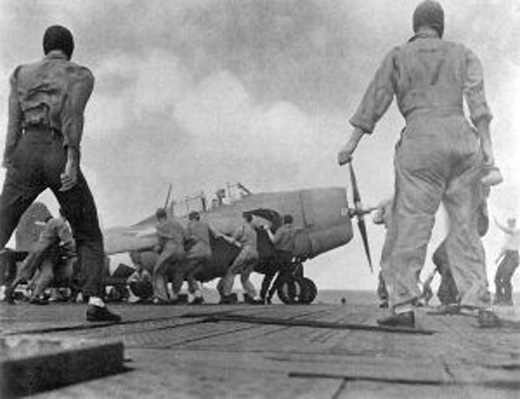 |
New Guinea
Organized resistance on Goodenough Island ceases. 250 Japanese soldiers are withdrawn to Rabaul by destroyer after nightfall. After an exhausting overland journey, the head of the 2nd Battalion, 126th Infantry, US 32nd Division, reaches Jaure. From there the force is to move to the Buna area via Natunga and Bofu with the Antitank and Cannon Companies protecting its rear and harassing the enemy in the Wairopi area.
[Pacific
The US submarine Nautilus (SS-168) sinks the Japanese merchant cargo ship Kenun Maru (4643t) about 20 miles east of Shiriya Zaki, Honshu.
[United States, Command
Vice-Adm William F. Halsey assumes command of US naval forces in the South Pacific, succeeding Vice-Adm Robert L. Ghormley.
[United States, Home Front
A gigantic convoy sails for the Mediterranean under Rear-Adm H. Kent Hewitt, carrying American troops under Gen Patton, for the landing in North Africa, Operation TORCH.
[